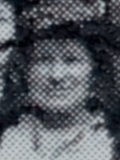The Cambridge Connection before 1900 (Mar 2018)
Before 1900, numerous Irishmen, and eventually, a handful of Irish women, pursued mathematical studies at various colleges of the University of Cambridge. Some went directly from earlier private or secondary schooling, others first earned degrees at TCD, or at one of the Queen's Colleges in Belfast, Cork or Galway, before competing in the Cambridge Mathematical Tripos a year or more later.
Many of these Cambridge graduates ended up in academia, or teaching at prestigious schools, in Ireland, Britain or much further afield. Irish schools of note here are Belfast's Methodist College ("Methody"), Royal Belfast Academical Institution ("the Inst"), and Campbell College, Portora in Enniskillen, and Dublin's Alexandra College. Other graduates joined the civil service, or pursued careers in law or medicine, or became clergymen.
On the other hand, a significant number of the mathematics and natural philosophy (physics) staff in the early days of the Irish colleges in Dublin, Belfast, Cork and Galway were Cambridge men, often English or Scottish by birth. Below, we explore this two-way traffic in some detail. We document 70 relevant people whose first degrees were earned before 1900, in chronological order by birth.
The dozen women from Ireland or Britain included in this survey generally studied maths either at the Cambridge-affiliated all female Girton College (founded 1869) or Newnham College (founded 1871). From 1882 on, such women were allowed to compete in the Tripos, and while many did well as a result, they still weren't eligible for Cambridge BAs, since that university didn't award women any degrees until 1948. Despite what some sources claim, Cork's Alicia Boole is not germaine to our story here, not having attended either college or attempted the tripos.
Many of these women received either contemporary Royal University of Ireland degrees (via examination)---which was possible from 1878 on (Queen's Belfast allowed women students from 1882 on)---or much later TCD degrees (starting in 1904). Others received ad eundum Irish degrees, based on Tripos performances. Another, much earlier, ad eundum degree recipient was a world-famous mathematician barred from a Cambridge degree at the time for his religious reasons.
Cambridge BA mathematics graduates with First Class Honours were afforded the much-coveted wrangler status: the highest scoring such student was denoted senior wrangler, the next highest 2nd wrangler, and so on. There are 13 senior wranglers of special interest to us here, out of 45 wranglers total, of whom Stokes (1841), Campbell Allen (1879), Larmor (1880) and Orr (1888) were Irish, from an impressive list.
Several of the wranglers we cover also received the prestigious Smith's Prize (awarded to research students in maths and theoretical physics): Brinkley (1788), Stokes (1841), Cayley (1842), Thompson (1845), Tait (1852), Romer (1863), Graham (1878?), Larmor (1880), Dixon (1888), and Whittaker (1887). The last named also received the Tyson Medal in 1886. We do not, at this time, track other prizes, awards, medals, scholarships, fellowships, named chairs, promotions, titles, leadership roles in professional organisations, and so on. Nor, alas, have we indicated which secondary schools were attended by the scholars involved.
We've included a great variety of people who initial studies concentrated on maths or maths physics, regardless of what direction their careers later took them in. For the record, TCD didn't award degrees specifically in maths until 1835. The Irish Queen's Colleges awarded Mathematical Science degrees from the outset (1853 being the first year of graduation).
The German concept of PhD didn't arrive at Cambridge until 1895, and took a while to catch on. The first NUI PhD in the sciences seems to have been in 1922, the first TCD one in 1924. PhD's (and DSc's) in those early days were often awarded on the basis of previously published research, there are several examples of such DSc's (along with some honorary ones, going back to 1880) in what follows.
MA degrees at TCD and Cambridge were generally obtained 3 or more years after BAs, upon simple payment of a fee; they don't indicate further study or completion of any additional examinations, research or theses.
From 1900 on, the story broadens and deepens considerably. It will take several future blogs to cover the ground there.
Comments and corrections are, as always, welcome.
Last updated 13 June 2021.
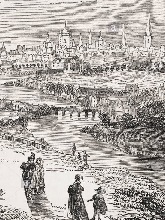 |
0. Charles Willoughby (1630?-1694) may have been born in Cork. He was educated at TCD and Oxford (graduating BA from the latter in 1649), Cambridge and Padua, and his career was spent in medicine, at RCSI and TCD. He was a member of the Irish College of Physicians and the Dublin Philosophical Society, and also found time to publish mathematics. He was Donegall Lecturer of Mathematics at TCD (1692-1694). He had a large and important library. |
 |
1. Rogerson Cotter (1750?-1830) was born in Mallow, Cork, and was educated at Cambridge (Trinity, 10th wrangler & Fellow 1771, MA, 1774). He was called to the bar, both in England and Ireland, and later served as an MP in Cork. |
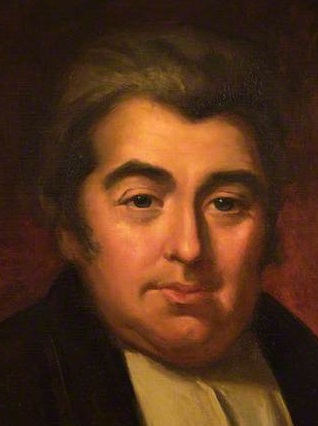 |
2. Astronomer John Brinkley (1766-1835) was born in Woodbridge, Suffolk, and was educated at Cambridge (Gonville and Caius, senior wrangler 1788). He spent over 30 years at TCD, also serving as the first Royal Astronomer of Ireland (at Dunsink), before becoming the Bishop of Cloyne. He published papers and books in maths and astronomy, and was also president of the Royal Irish Academy. |
 |
3. Edward Bromhead (1789-1855) was born 26 March in Dublin. He was educated at Glasgow and then at Cambridge (Caius, BA 1812). He was a founder of the Analytical Society, practiced law and also published in botany. He is best remembered today as the patron of two significant self-taught mathematicians, George Green and Cork-destined George Boole. |
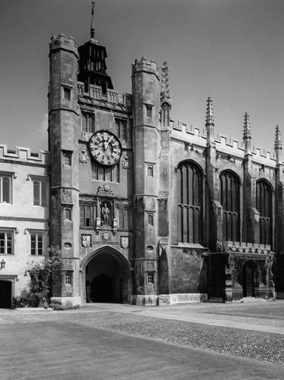 |
4. Pierce Morton (1803-1859) was born 27 November in Kilnacrott, Drumrora, Cavan, and grew up there and in Devon. He was educated at Cambridge (Trinity, 6th wrangler 1825, MA 1829), and was appointed as professor of maths at King's College in Nova Scotia, a position he left within six months. A few years later, in England, he published new proof of the focus-directrix property of conic sections, and a book on geometry. He was a magistrate in Ireland, and for a while in the 1840s lived in France. He spent his last decade working at the Cape Observatory in South Africa. Cambridge / Nova Scotia / Paper / Numericana / Cape / Cape 2 / NLI / 1847 |
 |
5. Robert Murphy (1806-1843) was born (probably in December) in Mallow, Cork. After publishing a spectacular maths pamphlet at the age of 18, despite having no early formal education, he was educated at Cambridge (Gonville and Caius, 3rd wrangler 1829). His brief career was mostly spent at Cambridge and at the University of London. He worked in algebraic equations, integral equations (with applications to electrostatics, gravity and heat), and operator calculus. He also wrote 2 books. Wikipedia / MAA / Letter & Bio |
 |
6. Matthew O'Brien (1814-1855) was born in Ennis, Clare, and was educated at TCD (BA 1834) and Cambridge (Gonville & Caius, 3rd wrangler 1838, MA 1841). He taught at King's College, London, and at the Royal Military Academy, Woolwich. He is credited with anticipating by several decades many of the results of classic vector analysis, and he applied them to the mechanics of the earth's motion. Among the books he published were several maths textbooks. |
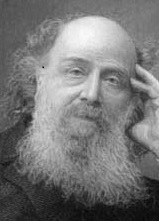 |
7. James Sylvester (1814-1897) was born 3 September in London and educated at Cambridge (St John's, 2nd wrangler 1837). As a Jew, he could not take the required Church of England oath, hence was denied a Cambridge degree (they finally awarded him BA & MA in 1872). TCD, meanwhile, had given him the same degrees in 1841. His career was spent in London, the USA and at Oxford, and included a decade as an actuary and lawyer. |
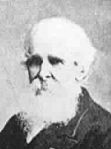 |
8. Astronomer Andrew Graham (1815-1908) was born 8 April in Irvinestown, Fermanagh. His education is unknown, but his career included two decades at Markree Observatory in Sligo followed by four decades at Cambridge Observatory. He computed and predicted orbits mathematically, catalogued about 75,000 stars, and gained fame for discovering an asteroid. |
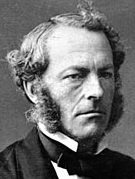 |
9. Mathematical physicist George Stokes (1819-1903) was born 13 August in Skreen, Sligo. His education and entire professional life was at Cambridge (Pembroke, senior wrangler 1841). His considerable legacy includes work in physical optics and asymptotic expansions, Stokes' theorem in multivariable calculus, and the Navier-Stokes equations in fluid dynamics. |
 |
10. Physicist, mathematician and engineer William Thomson (later known as Lord Kelvin, 1824-1907) was born 24 June in Belfast, where his father James Thomson taught maths at the Royal Belfast Academical Institution. The family moved to Glasgow when he was nine, and he was educated there and at Cambridge (Peterhouse, 2nd wrangler 1845). His entire career was spent back at Glasgow, doing pioneering work on heat, electricity and thermodynamics. He is also remembered for his engineering insights which led to the first successful transatlantic cable. Wikipedia / MacTutor / Britannica
|
 |
11. William Wilson (1826-1874) was born circa January in Peterborough, Northamptonshire, England, and was educated at Cambridge (St John's, senior wrangler, 1847). He then became the first professor of maths at Queen's College, Belfast, establishing an observatory there, and soon published the book A Treatise on Dynamics. After 5 years, however, he decamped to Melbourne, where for 2 decades he worked as professor of maths and astronomy, before dying relatively young. |
 |
11B. James McDowell (1830??-1885) was born in Ballymacarron, Down, on the west shores of Strangford Lough. He was first educated at TCD (BA 1852), and later enrolled at Cambridge (Pembroke, BA 1861) where he subsequently worked. He was an editor of the Messenger of Mathematics when it was founded in 1862. His 1863 volume Exercises on Euclid and in Modern Geometry ran to several editions. |
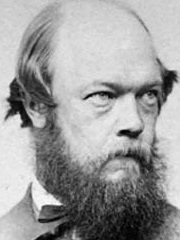 |
12. Mathematical physicist Peter Tait (1831-1901) was born 21 April in Dalkeith, Midlothian, and educated at Cambridge (Peterhouse, senior wrangler 1852). He replaced Wilson above as professor of maths at Queen's Belfast, but left after just six years, spending the rest of his career at Edinburgh. He co-wrote 22 text books. |
 |
13. George Slesser (1834-1862) was born 27 April in Milton of Gaval, Buchan, Aberdeenshire, and was educated at Aberdeen (MA 1853) and at Cambridge (Queen's, senior wrangler 1858, MA 1861). He in turn took over the Queen's (Belfast) professorship from Tait above, but only for 2 years due to his very early death (of consumption). He had been researching moving axes. (John Purser held the Belfast professorship after this.) |
|
13B. James Warren (1836-1896) was born 10 February in Dublin. He was educated at first at TCD (scholar 1856, BA 1857+, MA 1861), then much later at Cambridge (Caius, 7th wrangler & BA 1872, MA 1875), where he was a Fellow 1875-1888. He was also a clergyman. |
|
|
14. Henry Sharpe (1838-1917) was born 16 September in Warwick, England, and was educated at Cambridge (St John's, 6st wrangler 1861, MA 1864). He temporarily replaced Slesser above at Queen's when the former fell ill. While he spent most of the rest of his life as a clergyman back in England, he published in applied mathematics on and off, and also corresponded with Stokes. |
|
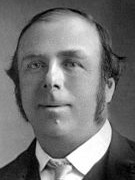 |
15. Astronomer and mathematical physicist Robert Ball (1840-1913) was born 1 July in Dublin, and was educated at TCD. He first worked at Birr, the Royal College of Science, TCD & Dunsink, serving as Royal Astronomer of Ireland, then later for two more decades at Cambridge, also becoming the director of the observatory there. He was an expert on tides, and in mechanics he invented the screw theory. He authored 10 books, on mechanics and astronomy, and is believed to have given about 2500 public lectures. |
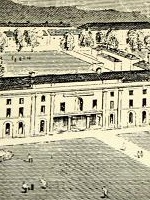 |
16. Randal Nixon (1840-1901) was born about August in Worcestershire, and educated at the University of London and at Cambridge (Peterhouse, 21st wrangler 1864, MA 1867). He first taught at the Brewers Company Grammar School, and at Glasgow, then for several decades at the Royal Belfast Academical Institution (where he taught James Larmor), before moving to London. He authored the books Euclid Revisited and Geometry in Space (Clarendon, 1880). Cambridge / Link / Edu Times 1 / Edu Times 2 |
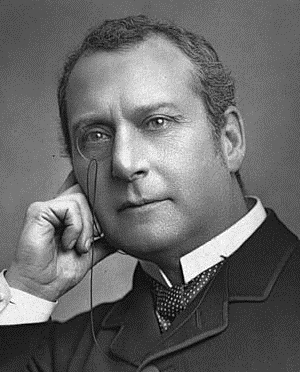 |
17. Judge Robert Romer (1840-1918) was born 23 December in Kilburn, Middlesex, and was educated at Cambridge (Trinity Hall, senior wrangler and Smith's Prize 1863, MA 1866). Following George Boole's premature death at the end of 1864, Romer beat out Robert Ball for the professorship of maths at Queen's Cork. However, he soon switched track, being called to the bar and going on to have a very distinguished legal career in London. Wikipedia / Cambridge / Dict Nat Bio / Queen's Cork |
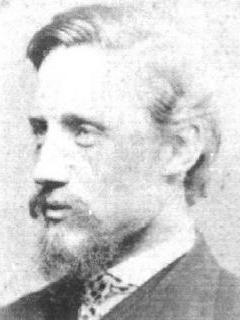 |
17A. Osborne Reynolds (1842-1912) was born in Belfast, and grew up in Essex in England. He was educated at Cambridge (Queen's, 7th wrangler 1867) and spent his career as the first professor of engineering at Owens College (Manchester). He was a pioneer in the study of fluid dynamics, and his name lives on in many concepts. |
 |
17B. James Popham (1843?-1924) was born in Cork city and at first was educated at Queen's Cork (BA 1860, MA 1861) and at TCD (BA 1864). He then attended Cambridge (Downing, 21st wrangler 1869, LLM 1872 or 1876). His career was spent as a barrister in England. |
 |
17C. Samuel Waymouth (1844-1873) was born near Torquay, Devon, England, and was at first educated at TCD (Scholar 1863, BA & gold medal 1864. MA ?). He then spent several years at Cambridge (Queen's, 2nd wrangler & Fellow 1869). He was appointed professor of maths at Durham in 1872, but died within a year. |
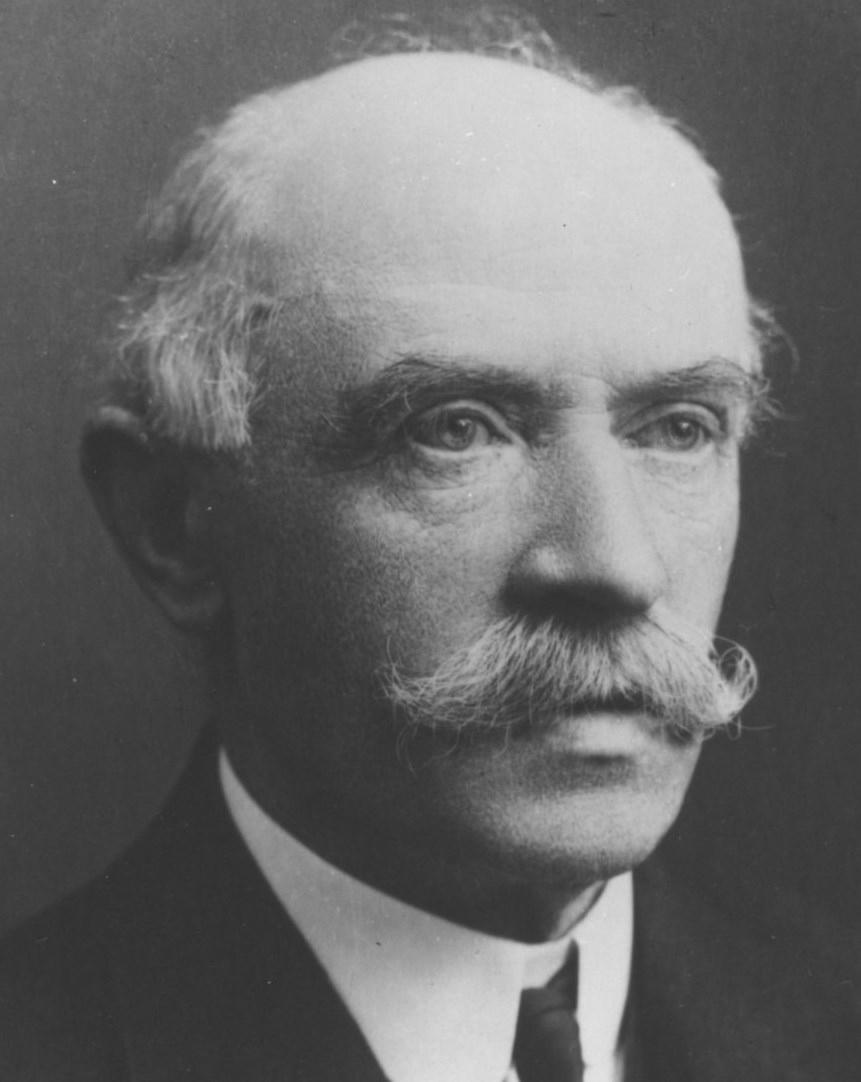 |
18. Charles Niven (1845-1923) was born 14 September in Peterhead, Aberdeenshire, and educated at Aberdeen (BA 1863) and Cambridge (senior wrangler 1867, MA 1870). He was professor of maths at Queen's Cork, published in electricity and heat, then taught physics for 4 decades at Aberdeen. QUI awarded him an honorary DSc (1880). |
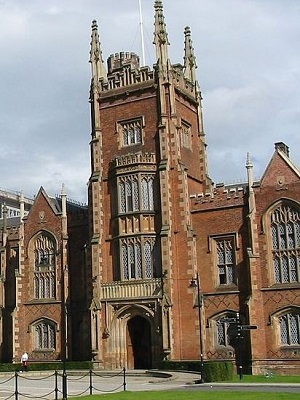 |
19. Robert Sankey Stevelly (1845-1916) was born in Belfast and was educated at Queen's Belfast (BA 1863) and at Cambridge (Peterhouse, BA 1868). He taught for a while at Aldenham School (Watford) before becoming an inspector of schools in England. |
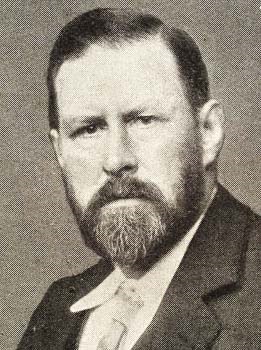 |
20. Robert Genese (1848-1928) was born 8 May in Dublin, and was educated at Cambridge (St John's, 8th wrangler 1871, MA 1874). After a few years at the Training College in Carmarthen, he taught for a further 40 years at Aberystwyth. |
 |
21. (Arthur) Harry Anglin (1849-1934) was born 27 March in Cork, and was educated at Queen's College Cork (BA 1867, MA 1868) and at Cambridge (Peterhouse, BA 1874). He taught in various schools before securing the professorship of maths back at Cork (1887-1913). He published in algebra, geometry and trigonometry. Cambridge / Obit / 1901 census / 1911 census |
 |
22. Christopher Graham (1851-1927) was born 28 Sept in Killeeshil, Tyrone, and brought up there and in Darver, Louth. He was educated at TCD (BA 1873, MA 1877) and at Cambridge (Gonville & Caius, 3rd wrangler & Smith's Prize? 1878, MA 1881). He taught at Girton for 15 years, and then served for many years as inspector of schools in Ireland. Cambridge / Link / 1901 Census / 1911 Census |
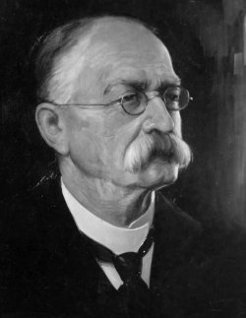 |
23. John MacFarland (1851-1935) was born 19 April in Omagh, Tyrone, older brother of Robert below. He was educated at Queen's Belfast (BA 1871, MA 1872) and Cambridge (St John's, 26th wrangler 1876, MA 1879). His career started at Repton School (Derbyshire), following which he emigrated to Melbourne University, where he focussed on administration and rose to the rank of chancellor. RUI awarded him an honorary LLD (1892). Wikipedia / Cambridge / Repton / Dic Ulster Bio / Aus Dict Bio / Geelong / |
 |
24. Physicist John Adair (1852-1913) was born 20 January in Dublin and educated at TCD (BA 1873) and at Cambridge (Pembroke, 7th wrangler 1878, MA 1881). His career included spells at Cambridge and the University of Sydney. He published in fluid dynamics. Wikipedia / Cambridge / Dic Aus Bio / Papers / Link |
 |
25. Charles Victor Coates (1853-1944) was born 25 August in Belfast and educated at Queen's Belfast (BA 1873, MA 1874) and Cambridge (Trinity, 5th wrangler 1877. MA 1881). He taught at Birkbeck College. |
 |
26. Alexander McIntosh (1855?-1923) was born somewhere and was educated at TCD (BA 1875, MA 18xx) and at Cambridge (Queen's, 6th wrangler 1880, MA 1883). His career was spent at Cambridge and Mill Hill School. |
 |
27. Andrew Campbell Allen (1856-1923) was born 9 February in Belfast. He was educated at Queen's Belfast (BA 1875, MA 1877), where he was taught by John Purser, and at Cambridge (Peterhouse, senior wrangler 1879, MA 1882). He was tutor and fellow at Peterhouse, and also principal of Chester Training College, before becoming a vicar for the last 3 decades of his life. Campbell Allen published numerous papers on trigonometry, geometry, optics and electicity. He was also a prolific author on ecclesiastical matters. |
 |
28. Thomas Knowles (1856-1920) was born 13 February in Ferragh, Cullybackey, Antrim. He was educated at Queen's Belfast (BA 1877, MA 1879) and Cambridge (Peterhouse, 19th wrangler 1883, MA 1886). He taught at the Royal Grammar School (Lancaster) and at Liverpool College (serving as vice-principal there). His interests included astronomy and chemistry. |
 |
29. William Coates (1857-1912) was born 2 June in Midleton, Cork, and was educated at TCD (BA 1879, MA ?) and Cambridge (Queen's, wrangler 1886, MA 1890). He was an examiner for the Intermediate Board of Education before being a leading coach at Cambridge for over 2 decades until his relatively early death; he also served as the bursar there. |
 |
30. Theoretical physicist Joseph Larmor (1857-1942), older brother of Alexander below, was born 11 July in Magheragall, Antrim, and grew up there and in Belfast. He was educated at Queen's Belfast (BA 1874, MA 1875), where he was taught by John Purser, and at Cambridge (St John's, senior wrangler & Smith's Prize 1880, MA 1883). [JJ Thompson was 2nd wrangler.] He was professor at Queen's Galway for 5 years, then spent nearly half a century at Cambridge, in 1903 getting the chair vacated by Stokes upon his death. Most of his research concerned electricity, thermodynamics, and the electron theory of matter. He had at least 4 doctoral students and authored or edited 6 books, including the influential Aether and Matter (Cambridge, 1900) and 2 volumes of the papers of Stokes (Cambridge, 1904 & 1905). He received honorary doctorate from RUI (1882), TCD (1893) and Cambridge (1920). Wikipedia / MacTutor / Family / Enc Brit / Ulster Bio |
 |
31. John Eccles (1857-1921) was born 9 September in Larne, Antrim, and was educated at Queen's Belfast (BA 1876, MA 1877) and at Cambridge (Peterhouse, 14th wrangler 1881, MA 1885). For over a quarter of a century he worked for the Survey of India. |
 |
32. Physicist Alexander Larmor (1858?-1936), younger brother of Joseph above, was born (when?) in Magheragall, Antrim, and was educated at Queen's Belfast (BA 1879, MA 1881) and Cambridge (Clare, 11th wrangler 1884, part III 1885, MA 1888). He got fellowships both at Clare and at Owen's College, Manchester. Most of his career was spent teaching at the Londonderry Academy, where he served as head, and Magee College. He authored some books on Euclid's geometry. Cambridge / Nature / 1901 Census / 1911 Census
|
 |
32B. Agnes Perry (later Ehrhardt, 1858-1940) was born 1 June in Garvagh, south of Coleraine, Londonderry, and grew up there and in Belfast, a sister of engineer and mathematician John. She was educated at Newnham (BA earned 1883). She taught WHERE? In 1891, she married Albert Ehrhardt. Her nieces included pioneering early engineering graduate Alice and mathematics graduate Agnes (Molly). |
 |
33. Physicist Alexander Anderson (1858-1936) was born 16 May in Camus, Coleraine, Londonderry, and was educated at Queen's Galway (BA 1880, MA 1881) and Cambridge (Sidney Sussex, 6th wrangler 1884, MA 1888). He was on the Galway staff for half a century, rising to the rank of president. He received DSc degrees from Glasgow (1901) and NUI (1908). Wikipedia / UCG / Cambridge / 1901 Census / 1911 Census |
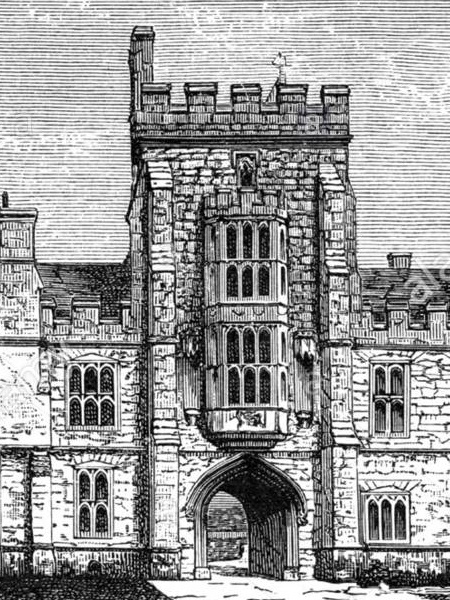 |
33B. Annesley Somerville (1858-1942) was born 16 November in Ballincollig, Cork, and was at first educated at Queen's Cork (BA 1875, MA 1876). He then went to Cambridge (Trinity, 21st wrangler 1880, MA 1889). He taught for many decades, mostly at Eton, and authored textbooks in French. The last 20 years of his life he was MP for Windsor. |
 |
34. Robert MacFarland (1860-1922) was born 18 October in Omagh, Tyrone, younger brother of John above. He was educated at Queen's Belfast (BA 1880) and Cambridge (Gonville and Caius, 9th wrangler 1883, MA 1890). His career was spent teaching at Repton School (Derbyshire) and at Campbell College, serving as headmaster at the latter. |
 |
35. James Tate (1860-1892) was born 20 February in Leitrim. He was educated at Queen's Belfast (BA 1881, MA 1882) and at Cambridge (St John's, 16th wrangler 1886, MA 1890). He taught at King's School (Rochester) and at Derby School, then died suddenly during the interview process for a headmaster position. Cambridge |
 |
36. Robert Semple (1860-1937) was born 22 May in Belfast and was educated at Queen’s Belfast (BA 1880, MA 1881), the University of London (BA, 1881), and at St John’s Cambridge (21st wrangler 1884, MA 1887). His career was spent as a clergyman, mostly in Downpatrick and Limerick. |
 |
37. David Stewart (1861-1934?) was born 11 August in Belfast and was educated at Queen's Belfast (BA 1881, MA 1882) and Cambridge (Gonville & Caius, 6th wrangler 1885, part II 1886, MA 1889). He was vice-principal at Chester Training College before serving as a clergyman (mostly in England) for the rest of his life. He also taught for a few years at Foyle College in Derry. QUB / Cambridge / 1901 Census |
 |
38. Charles McVicker (1862-1933) was born 20 July in ?? Londonderry, and was educated at TCD (BA 1886, MA 1893) and Cambridge (Christ's, 17th wrangler 1892). He taught at St Mary's College (Hammersmith). |
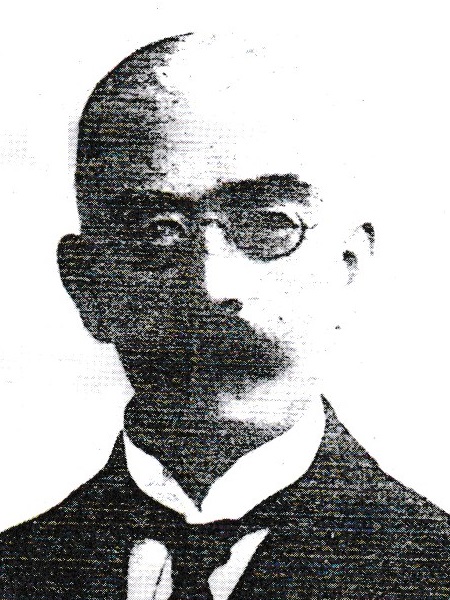 |
38A. William Tetley (1861-1927) was born in Sheffield, Yorkshire, and was educated at Cambridge (St Catharine's, 31st wrangler 1883, BA 1884). He taught maths at Portora in Enniskillen 1891-1925. |
 |
39. Henry Dawson (1862-1918) was born 2 August in Omagh, Tyrone, and was educated at TCD (BA 1882) and Cambridge (Christ's, 19th wrangler 1886, MA 1890). His career was spent at Cambridge and Firth College, Sheffield. He is remembered for the Dawson function. |
|
|
40. Margaret (Maud) Meyer (1862-1924) was born 3 September in Strabane, Tyrone, and grew up there, in Italy and in England. She was educated at Girton (15th wrangler 1882), was an early member of the LMS, and in 1916 became one of the the first 6 female members of the RAS. She taught at Notting Hill High School (1882-1888), then at the third level at Girton (1888-1918) and at University College London (1919-1924). TCD awarded her an ad eundum MA (1907). Wikipedia / Dict Nat Bio / Gazette / RAS / IEEE |
 |
41. Mary Raymond (1864-1926) was born 14 September?? in Blennersville, Kerry. She was educated at Girton (earned BA 1887). She taught at Perse School (Cambridge), Howell's School (Llandaff), Brisbane Grammar School, James Allen's School (Dulwich) and Sydenham High School. TCD awarded her ad eundum BA & MA (1906). |
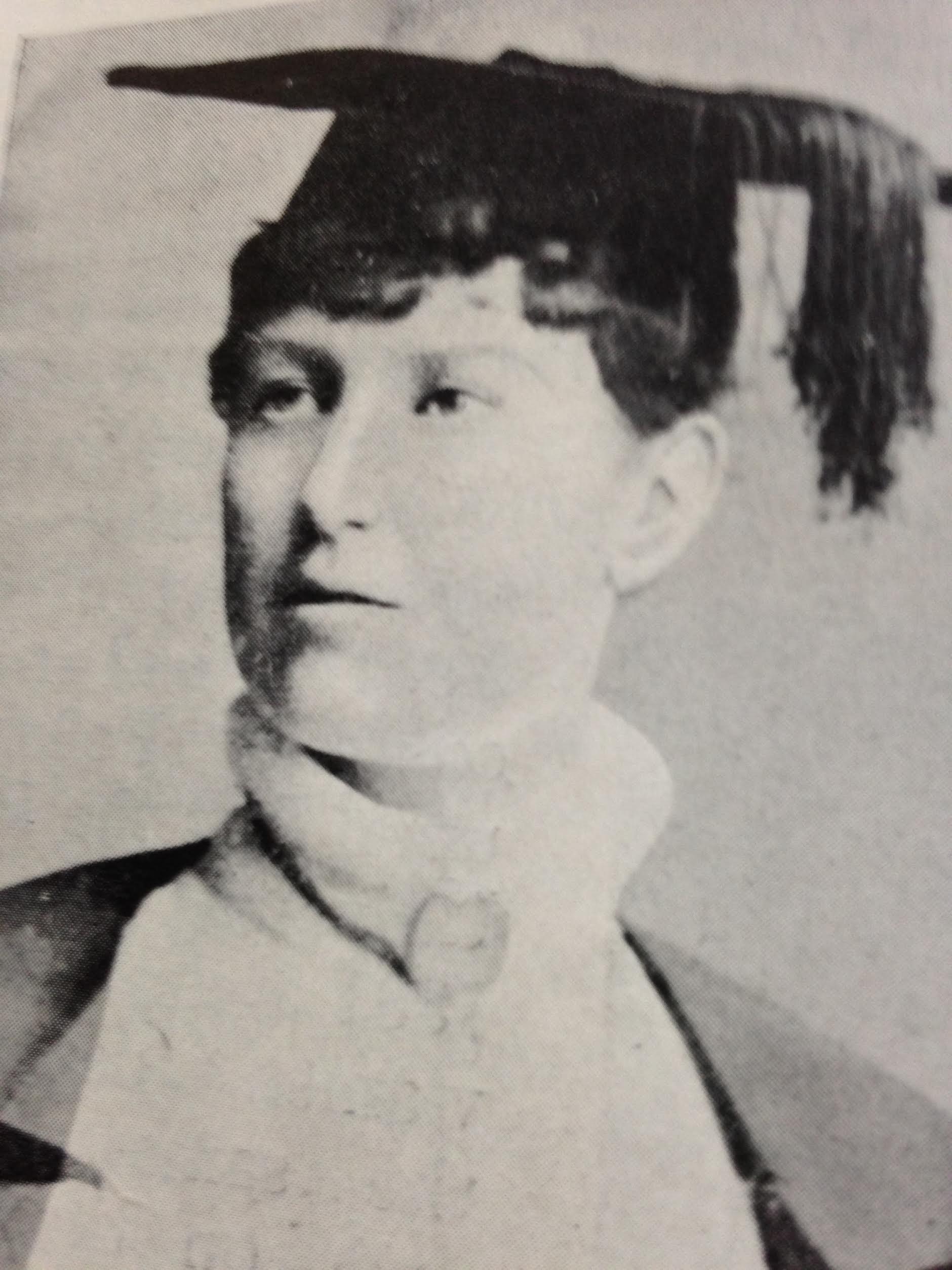 |
42. Astronomer Alice Everett (1865-1949) was born 15 May in Glasgow, and brought up in Belfast, where her father was professor of natural philosophy at Queen's College. She was educated there and at Girton: sitting the Royal University of Ireland examinations earned her a BA (1887) and her Tripos performance (1889) earned her an RUI MA the same year. She worked at the Royal Observatory in Greenwich (1890-1895) and in the USA (Pottsdam 1895-1898 and Vassar 1898-1899), and much later did research back in London in optics and the engineering of early television. |
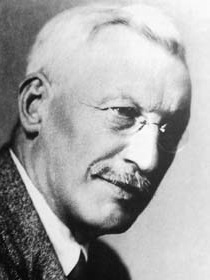 |
43. Alfred Dixon (1865-1936) was born 22 May in Northallerton, Yorkshire, and was educated at the University of London (BA 1883) and Cambridge (Trinity, senior wrangler 1886, part II 1887, MA 1890, ScD 1897). He was professor of maths at Queen's Galway for 8 years, then served in the same capacity at Belfast for 3 decades. His research included workon DE, binomial coefficients and hypergeometric functions. He is remembered for Dixon's identity and Dixon's elliptic functions. He wrote the book The Elementary Properties of the Elliptic Functions with Examples (Macmillan, 1894). QUB later gave him an honorary DSc (1932). |
 |
44. John Alexander (1865-1942) was born 12 Nov in Imlick, Carrigans, Donegal, near Derry. He was educated at Queen's Belfast (BA 1886, MA 1889) and at Cambridge (St John's, 8th wrangler 1890, MA 1895). His whole career was spent as headmaster of Tavistock Grammar School in Devon. He was a prolific writer on local history. |
 |
45. William McFadden Orr (1866-1934) was born 2 May in Ballystockhart, Comber, Down, and was educated at Queen's Belfast (BA 1885, MA 1887), where he was taught by John Purser, and Cambridge (St John's, senior wrangler 1888, part II 1889, MA 1892). His career was mostly spent at the Royal College of Science for Ireland, moving to UCD when RCScI was merged with it in 1926. His interests were broad, and he published on hypergeometric series, dynamics and fluid dynamics. QUB awarded him an honorary DSc (1919). Wikipedia / Cambridge / Nature / Royal Soc / Dic Nat Bio / Equation |
 |
46. Frances Hardcastle (1866-1941) was born 13 August in Writtle, Chelmsford, Essex. She was educated first at Girton (BA earned 1891, part II 1892), then travelled to the USA, studying at the University of Chicago. From there she went to Bryn Mawr to work with Charlotte Scott, where she became one of the founding members of the American Mathematical Society, and translated Felix Klein's book On Riemann's Theory of Algebraic Functions and Integrals. Returning to Cambridge to study, she published several papers on point-groups, and eventually got a degree from the University of London (BA 1903). TCD awarded her an ad eundum MA (1905). From 1907 on she was much involved in the suffrage movement. Wikipedia / LMS / Ladies in Lab / C / Change |
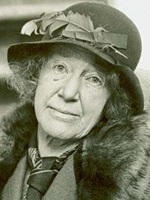 |
47. Constance Crommelin (later Masefield, 1867-1960) was born 6 February in Cushendun, Antrim, and was educated at Newnham College (BA earned 1888). She stayed an extra year to study literature. After a stint of interior decorating (a business venture with her sister Florence), in 1891 she was teaching in Brighton. In 1901 census she's a "teacher and lecturer" in London. She married a future poet laureate in 1903. She also wrote plays with Isabel Fry. |
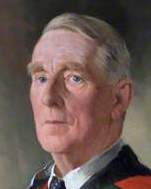 |
48. Physicist William Morton (1868-1949) was born 17 February in Belfast, Antrim, and was educated at Queen's there and at Cambridge (St John's, 8th wrangler 1892, MA 1898). He taught back at Belfast for 4 decades, also serving as dean there. He did research in electricity, acoustics, and hydro-dynamics there, supervised at least 5 master's theses by women, and received a DSc (year?). Wikisource / QUB / Cambridge / BBC / Papers / Obit / 1901 Census |
 |
49. Astronomer Annie Russell (later Maunder, 1868-1947) was947) was born 14 April in Strabane, Tyrone. She was educated at Girton (BA earned 1889), where she was the highest ranked mathematics student. She then taught at Jersey Ladies College for a year, before spending decades pursuing solar research at Greenwich Royal Observatory, often publishing her findings under her husband's name. Her older brother Samuel also did maths, at QUB. Wikipedia / Irish Times / Bio / DIB |
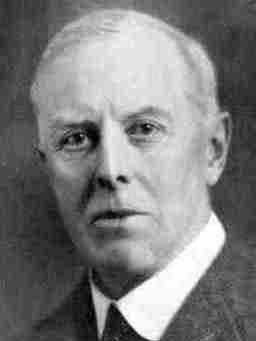 |
50. Mathematical physicist John Townsend (1868-1957) was born 7 June in Galway, where his father was professor of engineering. He was educated at TCD (BA, 1890), and then taught there for a few years. Following study with JJ Thompson at the Cavendish Lab in Cambridge, he spent over 4 decades as professor of physics at Oxford, supervising at least 2 doctoral students. His research included study of electrical conduction in gasses. Wikipedia / Enc Brit / Royal Soc / Discharge / Effect / Unit |
 |
51. Richard Heron (1868-1931) was born 17 September in Dunadry, Antrim. He was educated at Queen's Belfast (BA 1890, MA 1893) and at Cambridge (St John's, 20th wrangler 1893, MA 1901). He taught briefly at Campbell College and later became an inspector of schools. QUB / Cambridge / Campbell / 1911 Census |
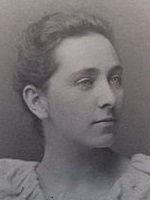 |
52. Medical physicist Edith Stoney (1869-1938) was born 6 January in Dublin, daughter to Offaly's physicist George Stoney (who later coined the term "electron"). She was educated at Newnham College (BA earned 1893). She had a remarkable career in physics and medical physics, including stints teaching maths at Cheltenham Ladies' College and physics at the London School of Medicine for Women, from which she had received a medical degree (1895). TCD awarded her ad eundum BA & MA (1904). She was very active in the suffrage movement and in WWI medical efforts. Wikiepedia / IPEM / Nature |
 |
52B. Harold Major (1869-1933) was born 24 February in Ballymacash? Lisburn, and was educated at Queen's Belfast (BA 1888) and Cambridge (Queen's, BA 1891, MA 1898). He taught in England, at Mansfield Grammar School (1892-1902) and Weymouth College (1902-1933). |
 |
53. Isabel Maddison (1869-1950) was born 13 April in Cumberland, and was educated at University College Cardiff and at Girton (earned BA 1892, 27th wrangler). On the recommendation of Cayley, who had taught her, she went to Bryn Mawr in the USA to study with Charlotte Scott for 2 years. She got a BSc (1893) from the University of London via external examination, and spent 1894-1895 studying in Göttingen. She then returned to Bryn Mawr and completed her PhD under Scott for the thesis "On Singular Solutions of Differential Equations of the First Order in Two Variables and the Geometrical Properties of Certain Invariants and Covariants of Their Complete Primitives" (1896). She taught there for 3 decades. TCD awarded her an ad eundum BA (1907). Wikipedia / MacTutor / Agnes Scott / Ladies in Lab / Revolvy / zbMATH |
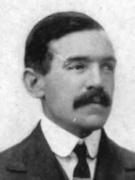 |
54. Francis Sharpe (1870-1948) was born 23 January in Warrington, Cheshire. He was educated at Cambridge (Christ's, tied senior wrangler 1892), Manchester (MA? 1901), and Cornell, where in 1907 he is believed to have been the second person to earn a doctorate under an Irish advisor. He spent over 30 years on the staff at Cornell, also serving as department head there. His research spanned hydrodynamics and algebraic geometry. (His daughter Edith lectured in maths at Queen's Kingston, as he had done in the early 1900s.) |
 |
55. Physicist John McClelland (1870-1920) was born 1 December at Macosquin, Coleraine, Londonderry. He was educated at Queen's Galway (BA 1892, MA 1893) and then studied at Cambridge. Most of his relatively short career was spent doing pioneering research at UCD. He received a DSc from NUI (1906) and an honorary DSc from TCD (1917). |
 |
56. William Houston (1871-1953) was born 18 January, possibly in Coleraine, Londonderry. He was educated at Queen's Belfast (BA 1892, MA 1896) and at Cambridge (St John's, 5th wrangler 1896, part II 1897). His career was spent at Cambridge, followed by 4 years at UCG, then he became assistant commissioner of education for Ireland. |
 |
57. John Leathem (1871-1923) was born 5 May in Belfast and was educated at Queen's Belfast (BA 1891) and Cambridge (bracketed 4th wrangler, 1894, part II 1895). The University of London awarded him a DSc (1899). His relatively short career was spent at Cambridge. He wrote 4 books, including Volume and Surface Integrals Used in Physics (Cambridge, 1905), in which he introduced the now standard arrow notation for limits. His colleague G. H. Hardy enthusiastically embraced and promoted this innovation. His brother George also did maths (QUB 1903, St John's Cambridge 1904). |
 |
58. George Locke (1872-1958?) was born 13 February in Belfast, and was educated at Queen's Belfast (BA 1894) and Cambridge (St John's, BA 1897, MA 1901). His career was spent teaching at the Royal Agriculture College (Cirencester), Wallasey Grammar School, and Stand Grammar School (Whitefield, where he was headmaster). |
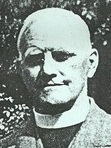 |
59. William Clements (1872-1949) was born 7 September in Maryborough, Queen's County (now Port Laois, Laois). He was educated at Queen's Belfast, then at Cambridge (St John's, BA 1897, MA 1908). He taught briefly at Methodist College, Belfast, before turning to a career as a clergyman in England. |
 |
60. Alfred Robb (1873-1936) was born 17 or 18 January in Belfast, and was educated first at Queen's Belfast (BA 1894) and at Cambridge (St John's, BA 1897, MA 1901). He was an expert on the Zeeman magnetic effect, and obtained his doctorate in 1904 under Woldemar Voigt at Göttingen on "Beiträge zur Theorie des Zeemaneffektes". His career was spent at Cambridge, where he authored four books on time, space and relativity. |
 |
61. Helen Bartram (1873-1957?) was born 12 May in Canonbury, London. She was educated at the University of London and then at Girton (BA 1894). She taught at Presonton High School, North London Colleagiate School, County Secondary School (St Pancras, London) and finally for 2 decades at King's Warren School (Plumstead), where she was headmistress. TCD had awarded her an ad eundum BA (1904?). |
 |
62. Edmund Whittaker (1873-1956) was born 24 October in Southport, Lancashire, and was educated at Cambridge (second wrangler 1895; Bromwich below was senior wrangler). After a decade teaching at Cambridge, he became Astronomer Royal of Ireland and Andrews Professor of Astronomy at TCD (1906-1911). The rest of his career was spent at Edinburgh. His PhD students included UCD's Phil Gormley, whose contemporary Dick Timoney also studied under him in the early 1930s. NUI awarded him an honorary DSc (1939), and de Valera used his counsel while setting up the DIAS. |
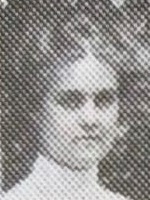 |
63. Mildred Barwell (1873-1978) was born 5 November in London, and was educated at Girton (earned BA 1895, part II 1896). She taught briefly at King's College London, Girton, Dulwich, and from 1902 to 1919 at Alexandra College in Dublin, then lived a remarkable further 6 decades. She received an ad eundum MA from TCD (1905). She published a paper on conformal mappings. |
 |
64. J. Riversdale Colthurst (1874-1958) was born 30 March in Danesford, Cavan, and grew up there and in Dublin. He was educated at Cambridge (Christ's, 15th wrangler 1896, MA 1901). He taught briefly at Malvern College ((Worcestershire), but most of his career was spent as a clergyman, first in England, and from 1923 on in Wicklow (Kilbride near Arklow, and Calary). He published on special relativity and other topics, and was active in DIAS affairs in the 1940s. 1901 census / 1911 census / Wikitree / Peerage / Cambridge / Paper 1 / Paper 2 / Paper 3
|
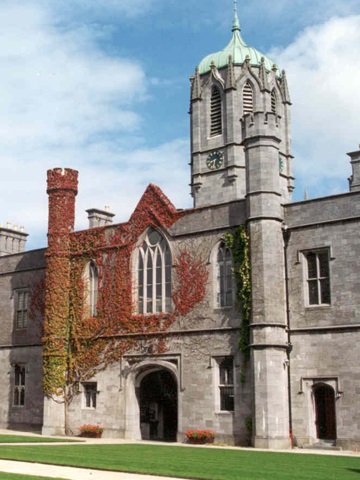 |
65. Thomas Stuart (1875-??) was born 8 February in Gortin, Edenderry, Omagh, Tyrone. He was educated at Queen's Galway (BA 1895, MA 1896, and DSc by exam 1900) and at Cambridge (BA 1902, MA 1906?). His career was spent at Cardiff, Queen's Belfast, Woolwich, and then the University of Hong Kong (1913 to at least 1924).
|
 |
66. Thomas John I'Anson Bromwich (1875-1929) was born 8 February in Wolverhampton, Staffordshire, and grew up there and in Natal and Durban, South Africa. He was educated at Cambridge (St John's, senior wrangler 1895, part II 1896, MA 1899, DSc 1909), and taught there briefly before becoming professor of maths at Queen's Galway in 1902. However, 5 years later he returned to Cambridge for 2 decades, before mental illness lead to his early death. His interests included electromagnetism, analysis and algebra forms. His books Quadratic Forms and their Classification by Means of Invariant Factors (Cambridge, 1906) and An Introduction to the Theory of Infinite Series (Macmillan, 1908, available today from the AMS) arose out of research done at Galway. |
 |
67. Mary Beeton (1876-1966) was born 4 March in London and educated at Girton (earning but not receiving her BA 1897). She worked for several years at the University of London's Biometrics Lab, under Karl Pearson, doing pioneer work there on the inheritance of duration of life. TCD awarded her an ad eundum MA (1906). MacTutor / Book / Biometrika
|
 |
68. (Frances) Evelyn Cave-Browne-Cave (1876-1965) was born 21 February in Streatham Common, near London, and was educated at Girton (bracketed 5th wrangler 1898, part II 1999). [Hardy was 4th wrangler in 1898.] She worked for a year or two at the University of London's Biometrics Lab, under Karl Pearson, before spending 35 years teaching at Girton. TCD awarded her an ad eundum MA (1907). During WWI she assisted Littlewood with ballistics calculations. |
